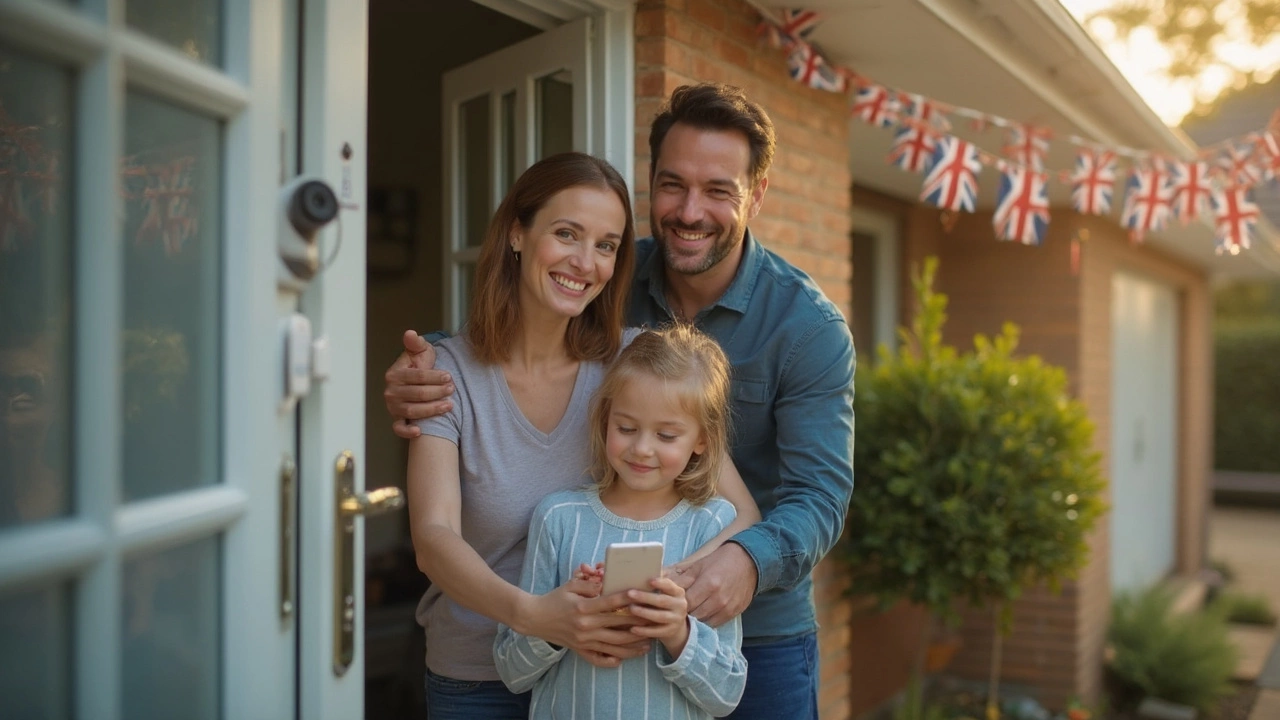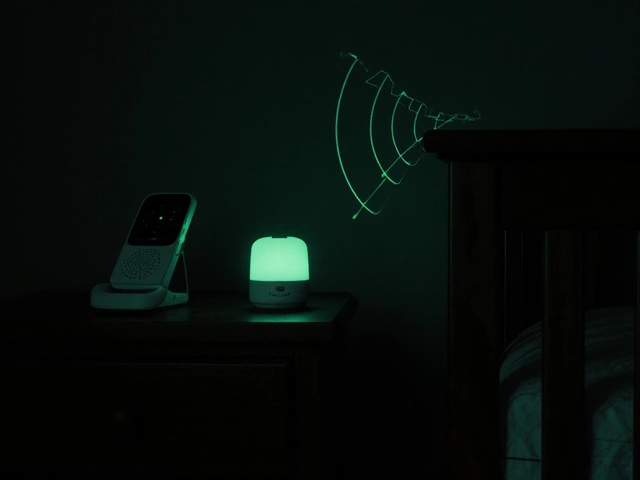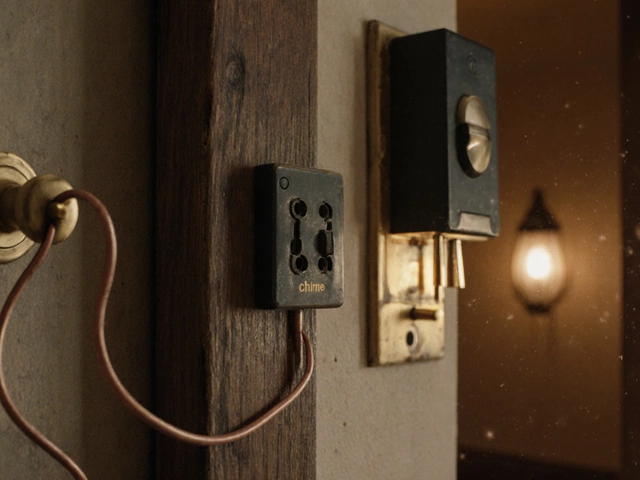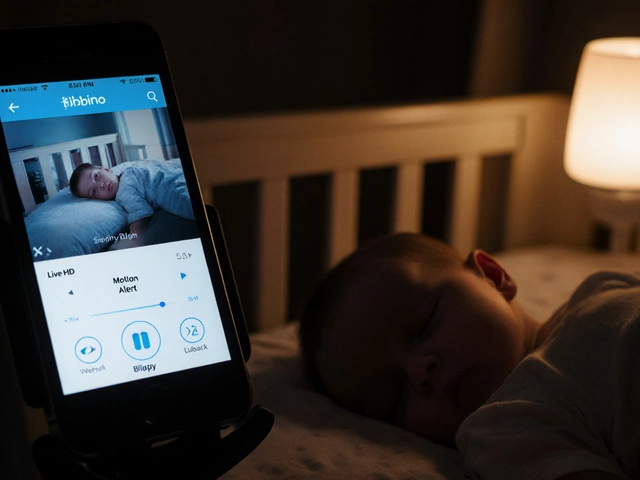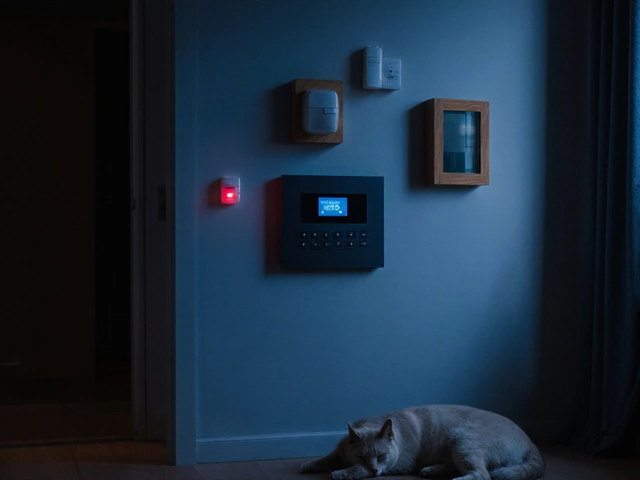Home break-ins aren’t just something you hear about on the news. They happen all the time, and most people don’t want to wait weeks—or pay through the nose—for pros to set up complicated security systems. DIY home security has totally flipped the script: you can order a kit online, set it up on your day off, and start getting instant alerts right on your phone. No long contracts, no messy drilling, and you stay in control every step of the way.
Most DIY systems come with wireless sensors and crisp HD cameras that work with an app. That means you’ll get a ping if someone’s at your back door when you’re not home, and you can check if it’s a package thief or just your dog, Rex, getting into the yard again. The best kits even let you add smart locks, doorbell cams, and smoke alarms as you go—so you’re not boxed in by your first purchase.
If you’re worried about being handy enough to install all this tech, don’t sweat it. These systems are built for regular folks, not electricians. Sensors peel and stick, cameras plug into any outlet, and the apps basically walk you through every step. Plus, if anything feels off? You’re usually one call away from solid tech support.
- The DIY Security Boom: Why It's Everywhere
- What a Great DIY System Looks Like
- The Heavy Hitters: Reviewing Leading Brands
- DIY Setup: Real-World Tips (and What Trips People Up)
- Must-Have Extras and Smart Integrations
The DIY Security Boom: Why It's Everywhere
Walk down any street in your neighborhood, and chances are you'll spot little cameras on doorbells and windows—this isn’t just a trend. In just the last five years, sales of home security gadgets you can install yourself have exploded. According to Statista, the U.S. smart home security market has more than doubled since 2020, now sitting at a whopping $6.6 billion for 2024.
What’s driving all this action? For one, you don’t need to fork over hundreds for a technician anymore. Most DIY security kits ship straight to your door, with everything set up for quick, stress-free installation. Flexibility is a huge reason folks jump on board. If you move, you just unplug your stuff and take it with you. There’s no waiting for lengthy appointments or buying overpriced add-ons you don’t even want.
Another reason: No one likes contracts. The old-school companies lock people in for years, but with DIY security, you can pick and choose when to pay for pro monitoring—or skip it entirely and handle alerts on your own.
Consumer tech journalist Lauren Goode at WIRED summed it up: “People want smart gear that works out of the box and doesn’t force them to be tech support for their own home. DIY security ticks all those boxes and then some.”
People aren’t just reacting to fear, either. A lot of renters, busy parents, and pet owners like me are switching because it puts more control in your hands. Check out this table comparing some real numbers:
| Year | DIY Systems Sold (US) | Avg. Savings vs Traditional Install ($) |
|---|---|---|
| 2020 | 4.1 million | 400 |
| 2022 | 7.3 million | 500 |
| 2024 | 9.8 million | 600 |
It’s not just about alarms anymore, either. DIY home security has become a gateway to the smart home, since most kits play nicely with voice assistants, lights, and even smart thermostats. So whether you want help keeping an eye on your front porch or making your whole house feel a little safer, this boom isn’t slowing down anytime soon.
What a Great DIY System Looks Like
So, what separates a good DIY home security system from a bad one? First off, it should be truly wireless. The whole point is to avoid drilling and rewiring your house, right? Look for battery-powered sensors that last at least a year, and cameras that connect over Wi-Fi. Some systems even offer cellular backup, which keeps you protected if Wi-Fi or power goes out—big win if you want serious peace of mind.
The real magic is in the app. A solid system gives you instant text or app alerts when motion is detected or a sensor trips—no delays. Bonus points if you can livestream video, save clips to the cloud, and customize notifications (so you don't get spammed every time your pet walks by a sensor). The top systems like SimpliSafe, Ring Alarm, and Abode nail this. Their apps are dead simple, with sliders and checkboxes instead of confusing menus.
Flexibility is key. You want to start with the basics—maybe a hub, a couple of door sensors, and a camera—but you don’t want to toss out your system in two years when you move or want to cover more windows. The good kits let you add new pieces anytime. Want to toss in a smart doorbell or glass break sensor? Easy. They play nice with Alexa, Google Home, and Apple HomeKit, so you can arm the system with your voice, automate lights, or set schedules right from your phone.
Quick tip: always check if the system offers both self-monitoring and optional pro monitoring. Most folks are happy handling alerts themselves through the app, but it’s nice to have backup if you want the cops alerted automatically during a break-in. No long-term contracts required, just month-to-month service—cancel anytime.
- Wireless design for easy install
- Reliable app with real-time alerts
- Expandable sensor and camera options
- Optional pro monitoring, no contracts
- Works with popular smart home ecosystems
Finally, make sure everything’s tamper-resistant. Leading brands offer sensors that alert you if someone tries to pull them off or smash them—and that’s not something you get with bargain kits. So pay a little extra for real protection, not just the illusion of it.

The Heavy Hitters: Reviewing Leading Brands
Shopping for a DIY home security system can get overwhelming fast. There’s a handful of brands everyone talks about, and it’s not just hype—these systems actually stand out because they’re easy to set up, reliable for alerts, and don’t tie you down with silly contracts.
SimpliSafe is a crowd favorite because you can snap the sensors in place in under an hour and go live right away. Their monitoring plans start at $19.99 a month (and you can quit whenever). The entry kit covers the basics: a base station, keypad, a motion sensor, and a handful of door/window sensors. Their cameras have clear video, day or night, and the app never nags you with ads.
Ring Alarm is Amazon-owned, so it slides right into an Alexa smart home. The starter kit is usually around $199, and you get an outdoor-rated siren, a keypad, contact sensors, and the famous Ring doorbell cam. Ring’s monthly monitoring plan is just $20, and you can control everything from one app—including video history, which is handy if you want to catch that late-night raccoon on camera.
Abode is a bit quieter in the marketing game, but people who want deep smart home features love it. You can mix in third-party devices, like Philips Hue lights or Yale locks, without fuss. They also have a techy twist: you can get on-demand professional monitoring—turning it on when you go on vacation, then switching it off when you’re around. No need to pay for what you don’t use.
Eufy Security is making moves with its affordable camera packs (think under $300 for a kit with several outdoor cameras and sensors). They don’t force you into monthly cloud fees—lots of video is saved locally. That’s handy if you feel weird about footage floating around the internet.
- SimpliSafe: Best for folks who want no-hassle, no-contract service and solid performance.
- Ring Alarm: Great choice if you’ve already got Alexa gear and you want that famous doorbell feature.
- Abode: Tops for people who want to tinker and blend in smart home tools.
- Eufy: Best if you’re budget-minded or want as little cloud use as possible.
Here's a quick look at some deal-breakers and perks in a handy chart:
| Brand | Starter Price | Contract Required? | Monthly Monitoring (USD) | Smart Home Integrations | Camera Included? |
|---|---|---|---|---|---|
| SimpliSafe | $250 | No | $19.99+ | Amazon Alexa, Google Assistant | Yes |
| Ring Alarm | $199 | No | $20 | Amazon Alexa | Yes |
| Abode | $230 | No | $21+ (on-demand options) | Alexa, Google, Apple HomeKit, Z-Wave | Optional |
| Eufy | $279 | No | None (optional $3/month for cloud) | Google Assistant, Alexa | Yes |
A lot of folks trip up by thinking they need the biggest, flashiest system. Truth is, you’re better off picking a brand that matches your tech comfort level and fits what you actually need to feel secure.
DIY Setup: Real-World Tips (and What Trips People Up)
If you’re tackling a DIY home security setup for the first time, you’re not alone. Even folks who don't know a hammer from a screwdriver are getting these systems running in under an hour. But some hiccups pop up over and over. Here’s how to avoid the stuff that frustrates most people – and make sure your system actually works as advertised.
The number one headache? The sensors don’t always ‘talk’ to the hub like they’re supposed to, usually because they’re out of range or blocked by thick walls. Most brands recommend keeping sensors within 100-200 feet of the hub for best results, and avoiding spots where Wi-Fi often drops. Another tip: Install motion sensors about 7 feet up, angled downward. That way, you catch intruders, not just your pets roaming around.
Cameras can also trip people up. If you put a camera facing a sunny window, the glare can make nighttime footage useless. Point cameras away from direct light, and make sure your Wi-Fi signal is solid in that spot (or grab a cheap range extender if it isn’t). For folks who love a good stat: Security camera brands report that around 30% of help calls in 2024 were about spotty Wi-Fi or blurry view—totally avoidable with some quick checks.
Here are quick steps that make a difference:
- Download the app and set up an account before you install a single sensor (trust me, it saves time).
- Lay out all the gear on a table to check what’s what—missing pieces are rare but not impossible.
- Name each sensor in the app as you install (‘Back Window,’ ‘Office Door’) so you’re not guessing later.
- Keep the sticky tabs on sensors clean; dusty surfaces mess with the adhesive.
Here’s a real-world comparison of some common DIY trouble spots and solutions:
| Problem | Why it Happens | Easy Fix |
|---|---|---|
| Sensor won’t connect | Too far from hub | Move sensor closer or use a repeater |
| Camera keeps dropping signal | Weak Wi-Fi area | Add a Wi-Fi extender |
| False alarms | Sensor near heating vent/pet moves past sensor | Reposition sensor or use 'pet mode' |
| App notifications don't arrive | Incorrect phone settings | Enable app notifications in settings |
A lot of folks forget backup power. If your Wi-Fi router and hub don’t have a battery backup, your entire system can go dark in a blackout. A cheap uninterruptible power supply solves this and keeps you covered if the power goes out.
The cool thing? Every mistake you dodge at the install stage means fewer late-night troubleshooting sessions down the road. If you get stuck, most top brands have video walkthroughs online, and their support teams actually know what they're talking about. You don’t have to be a pro—you just need to follow directions and keep a little patience in your toolkit.
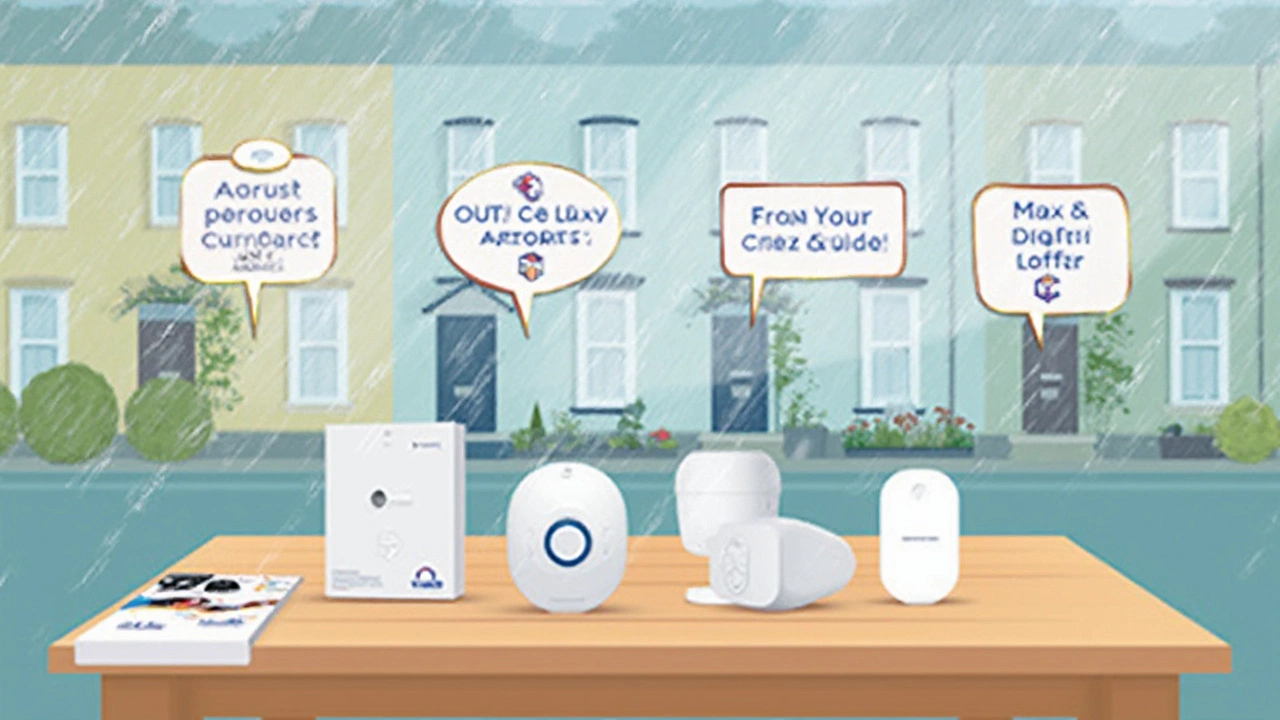
Must-Have Extras and Smart Integrations
Once you’ve got the basics—like motion sensors and cameras—you’re only halfway to a real smart home setup. Want to get the most out of your DIY home security system? You need to check out the extra gadgets and integrations that make your system better, more reliable, and honestly, just more fun to use.
Here’s what you should absolutely add if you want top-notch coverage and convenience:
- Smart doorbell cameras: See and talk to anyone at your front door, right from your phone. Great for scaring off porch pirates or just getting a heads up when the pizza arrives.
- Connected smart locks: These let you lock or unlock your doors remotely. Some models can even unlock automatically when you get home, using your phone as the key.
- Environmental sensors: Smoke, carbon monoxide, and water leak sensors give you alerts before little problems turn big (and expensive). Pairing these with your main security app keeps everything in one spot.
- Smart plugs and lights: Control lights, lamps, or small appliances from your phone or set them to mimic your schedule. This makes it look like you’re home, even if you’re halfway across the country.
- Voice assistants: Many systems now connect with Alexa, Google Assistant, or Siri. You can arm your system or turn on the lights just by talking to your speaker. Super handy when your hands are full, especially if you’re wrestling a squirmy pup like Rex at the door.
One big tip: Make sure the extras you buy actually work with your main security system. Most brands advertise if their devices play nice with things like Amazon Alexa or SmartThings—but double check, because not everything connects across the board.
If you like automation, look for features called "routines" or "scenes." These let you set up shortcuts (like turning on your lights and unlocking your door when you disarm the system in the morning). It’s a small thing that makes a big difference day-to-day.
In the end, the best upgrades are the ones that fit your real life. Some people want indoor cameras for pets, others care more about the garage door sensor. Building your own setup means you get exactly what you need, with no useless bells and whistles eating up space—or your budget.

